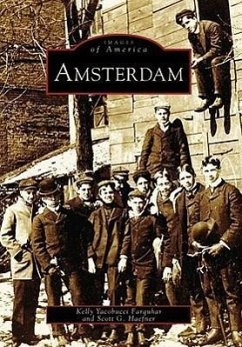Situated on the shores of the Mohawk River, Amsterdam is a highlight of New York State's heritage corridor. The rich history of the 1700s led to the development of the area after the Revolution. The opening of the Erie Canal in 1825 and the arrival of the Utica and Schenectady Railroad in 1836 paved the way for the industrial growth that made Amsterdam a household name across America. Carpet manufacturing and textile knitting, plus a host of ancillary operations, carried the city through the 1900s. Amsterdam focuses on the rise and fall of these industries and their role in building and shaping the community.
Bitte wählen Sie Ihr Anliegen aus.
Rechnungen
Retourenschein anfordern
Bestellstatus
Storno

